
Dec. 31, 1999: ELSA, Intel and VirtualTV team up to set industry standard for Stereo-MPEG2 in the year 2000, supporting DVD, digital television and internet-video
Due to the lack of real stereoscopic content I see severe danger that ELSA may go for some type of 2D-to-3D video conversion for their Revelator product - apart from a few real 3D-video bits.
VirtualTV, Germany is already heavily into 2D to 3D conversion. A product for realtime conversion on Hauppauge and miro TV-boards is already available. The set includes the software and SimulEyes-type shutterglasses at 129,- Euro.
In my opinion such conversions can't really work and harm the reputation
of real stereoscopic content, which has enough problems already.
Such conversions usually do 2 things:
a) put an artificial parallax in to move the image as a whole inside
or outside the monitor, which is just worthless
b) try to derive some stereo information from the differences in successive
frames , which is usually only possible in scenes with horizontal movement
of camera or objects; they do this by tempering with the timing
Anyway, would you buy an expensive television-set whose manufacturer claims that it'll convert all black-and-white movies into genuine color? I hope not.
If you're interested in Stereo-MPEG2 you don't have to wait for the industry. Just check out Michal's pages and his free encoding/decoding software.
Dec. 31, 1999: New Leadtek gfx-board with stereo-connector, stereoD3D driver and glasses
Leadtek introduces the WinFast
VR300 graphics board in 2 versions, one of which comes with wired shutterglasses.
The product isn't present on the Leadtek websites yet. The recent review
by Manfred Bertuch in c't magazine 26/99, page 68, took me by surprise.
At the first look the product is reminiscent of the ASUS offerings. There seems to be an onboard 3.5 mm stereo-glasses jack. The similarities to ASUS end at the core of the board. The new SiS 300 graphics chip of the VR300 may be a good-value-for-money all-in-one solution, but it just doesn't appeal to the hardcore gamer. It's too slow, even in monoscopic mode. (Unreal 1024x768@16bit: 13 fps). The stereo-driver of yet unknown origin and quality works for D3D only. The glasses seem to be a new design, but are obviously part of the large ASUS/APEC/Kasan-family. According to the review the fit isn't satisfying, since they tend to slip off the nose.
The price for the board + glasses bundle should be about 150,- EUR/USD.

Dec. 28, 1999: ASUS stereo video player full-resolution
The actual digitizing resolution of the ASUS stereo video player is 720x288 per field in PAL-mode. So the resolution given in the player display and the zoom factor of 1x was misleading (see earlier message). This is consistent with my experiences. The image looks better than 352.
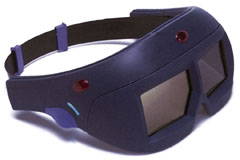
Dec. 28, 1999: IMAX-3D review
Check out the IMAX-3D review by Michael Starks of 3DTV Corp.
Dec. 28, 1999: ASUS V6600 with GeForce - Good Stereo-OpenGL
GL
Asus not only provides the first GeForce OpenGL Stereo driver, it's
also very good, much better than the D3D drivers.
It supports at least all Quake- and Unreal-engine based programs, including
Q3, Unreal-Tournament and Half-Life.
Didn't worked for me on the Descent3 and Homeworld demos though.
Major drawback at the moment is the necessity to reserve video-memory
for the flipping by choosing double resolution in the game setup. Setting
a 1600-resolution results in 800x600 per eye in stereo. This will be fixed
in the final release. The speed is higher than in normal 1600x1200 resolution
of course, it's just a memory-assignment trick.
D3D
Although the D3D-Stereo has been somewhat improved I'm still not happy
with it. There seems to be no dynamic auto-adjustment as in the ELSA- and
Metabyte D3D-drivers. Until now I checked lots of DX6 demos. According
to ASUS the latest driver is optimized for DX7, optimization for DX6 follows.
ASUS also told me that they're working on some auto-function.
tons of extras
Apart from that the V6600 TVR/TVRDeluxe versions offer a dedicated
3D-glasses connector (3.5mm), a good stereo video player (see ealier message),
lots of video in/out functions including realtime full-resolution, full-frame-rate
capture, a large software package, including Ulead Video Studio SE and
all the other properties you can expect from a full-blown 32Meg GeForce
board. A DDR (double data rate) memory version is also available. The Deluxe-versions
come complete with glasses, which is good value for money compared to most
stand-alone glasses.
Dec. 28, 1999: Stereo-MPEG-movie-player-beta available. Supports all types of glasses & helmets.
The player is compatible with many VGA-boards and almost all 3D-glasses
and -helmets, since it's based on the Win3D
library. Requires strong hardware (450+, AGP).
Download here
(600 kB) from Michal Husaks page or click here
for screenshot.
Also check out Michal's Stereo-Video-Page
and his recent comments on the Webboard.
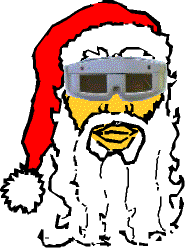
Dec. 25, 1999: Merry Christmas
Dec. 18, 1999: ASUS first to support Stereoscopic-OpenGL gaming on GeForce
With the release of the latest V6600
beta driver ASUS takes the lead on the NVidia GeForce.
Wicked3D/i-Art doesn't support GeForce at all yet. ELSA just released
beta-drivers with Revelator-OpenGL support, but until now only for their
TNT2-range.
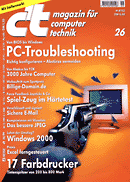
Dec. 18, 1999: Eye3D review in c't 26/99
German readers may like to take a look on my Eye3D review in the latest issue of c't - magazin für computertechnik.


Dec. 18, 1999: ASUS StereoMovie Player - 3D-Video with PC-shutterglasses
Here you go. The movie player (see preceding message) can be found in
V6600
driver V3.62 Beta 5.
Hopefully there will be soon a V3800 driver which contains the player
also.
ASUS provided me with a stand-alone file and I tried the player on
V3800.
Purpose:
- watching genuine field-sequential 3D-video-tapes (prerecorded or NuView) flicker-free on the PC using PC-shutterglasses
How to use:
1 - connect VCR or camcorder to ASUS board
2 - plug 3D-glasses into ASUS board
3 - start StereoMovie Player executable
4 - insert 3D-tape and press Play
5 - kiss your TV-shutterglasses good-bye
Features:
- works on all ASUS boards with video-in
- composite and S-Video input
- works in a window and full-screen
- 1x, 2x and full-screen zoom
- NTSC and PAL support
- uses page-flipping, even on the desktop (amazing)
- perfectly stable, no problems/slip-ups with the flipping
- doesn't change current graphics mode
- works at current windows refresh rate
- doesn't require glasses driver
- no black interlace lines
- stereo reverse button (away-team to Capt'n - we finally found intelligent
live down here!)
- stereo-/monoscopic button - allows watching 3D-tapes in half-res
2D
Problems:
- no digitizing/storing of 3D-videos
- aspect ratio in PAL not correct yet - image is too high
- digitizer resolution of only 352 * 288 per half-frame ?!?
Test Configuration:
ASUS V3800 TVR, driver v2.25
ASUS glasses
Win98
gfx modes tested:
1024*768 32bit 85 Hz
1024*768 32bit 100 Hz
800*600 32bit 120 Hz
Assessment:
I'll never watch a 3D-tape on the damn TV again - promise!

Dec. 18, 1999: ELSA Revelator native OpenGL stereo support - beta released
From the readme:
"Windows 9x driver for ELSA ERAZOR III, ELSA ERAZOR III LT and ELSA
ERAZOR
III Pro; first beta driver with OpenGL support for ELSA 3D REVELATOR
This driver based on NVIDIA's reference driver 362. It supports fullscreen
OpenGL games in stereo mode with ELSA 3D REVELATOR. This driver is
tested
with Quake II and Quake III in stereo mode.
This driver includes support for the special video functions of ELSA
ERAZOR III-Video and ELSA ERAZOR III Pro-Video.
Current known restrictions:
no ingame control panel visible within the OpenGL stereo mode (but
it is
possible to adjust the settings unvisible)
no support for Unreal Tournament in OpenGL stereo mode (Unreal Tournament
may crash in OpenGL mode with enabled stereo while Direct3D works fine)"
Thanks to Ralf for the news update

Dec. 18, 1999: Eye3D driver 2.61 and Activator 2.0 available
The advantage of Eye3D driver 2.61 over Wicked3D 2.61 is the use of i-Art-line-code instead of H3D-line-code. Although the Eye3D controller understands H3D code it works more reliable with it's own code. Some users, including myself, experienced problems with the Wicked3D driver. Sometimes the sync-doubler doesn't shut-off when returning to the Windows desktop.
The Activator 2.0 has some new features.
Get them from www.iart3d.com

Dec. 18, 1999: VR-distributor 'Computers and More' changed it's name to 'Virtual Realities'
They distribute all kinds of VR-stuff - glasses, helmets, gloves, input
deviced, force-feedback, software...
The new address is www.vrealities.com

Dec. 14, 1999: ASUS StereoMovie Player and native Stereo-OpenGL support available for download
The ASUS StereoMovie Player
should allow flicker-free stereoscopic playback of 3D-videotapes (3D-VHS
or NuView) on newer ASUS boards
with video-in feature.
According to ASUS the player is part of the V6600
release driver package, but also supports older models.
I must admit I haven't found and tried the player yet. I'll keep you
updated.
The ASUS V6600/V6800 Display Driver for Windows 95/98 3.62b beta 2 contains OpenGL-VR-support and enhanced VR-performance.
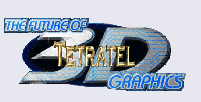
Dec. 14, 1999: More Tetratel News
Tetratel EyeFX 3-D Decoder (universal D3D-Stereo-Driver)
Tetratel jumps on the game-driver bandwagon, a vital step in todays 3D-market.
The driver supports Direct3D titles and uses 'Line-Blanking' mode.
"Settings for each game played are recorded to the windows registry.
Adjustments can be made to improve the effect within the game via the
keyboard. Z Depth, Separation, Distance and Center can be adjusted
and
saved for the next play."
Tetratel 3D DVD player
"Tetratel recently entered into a joint venture to built the wireless
3D
stereoscopic support into the Eagle - "Web Flyer" Internet appliance.
The
Web Flyer "STB" has a DVD player and with another development Tetratel
remastered John Williamson's "Out The Window" onto DVD. The results
are
incredible 3D in high resolution. Companies in the 3D Industry can
contact
Tetratel if they wish to discuss
the MPEG settings required to retain
stereoscopic 3D for their own DVD titles."

Dec. 6, 1999: 3D Gaming Basics Page
I've put up a new page for
beginners. Also contains the ultimate Game
Driver Compatibility Chart.

Dec. 3, 1999: Tetratel News
Actual statements by Tetratel
on the latest proceedings:
$29.95 PC-Glasses available now:
"Tetratel (manufacturer) and Apec (Glasses and case) are the suppliers
to ISee3D (http://www.isee3d.com)
for on-line stereoscopic video streaming. Live streaming is to include
racing, extreme sports and more.."
Patent issue:
"Tetratel developed the line blanking technology (on our own brains, cost and efforts) in 1996. It was sold as "Maxim-Eyes" until 1997. A Patent in the USA was filed in 1997 as a provisional patent. The patent was amended in 1998. A patent was also filed in Canada (1998) at the same time the full USA patent was filed."
"Woobo and Tetratel are in friendly discussions regarding our patent rights."
"What i-art may or may not consider legal is not what we consider legal
and we
will defend our rights as required (In North America)."
Flicker free stereo TV
"Tetratel has developed a wireless, LCD, flicker free TV system which
is expected to be on the market in early spring. This is above and beyond
the flicker reduction technology we developed in spring of this year."
Thanks to Tetratel for keeping me updated
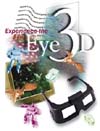

Dec. 2, 1999: i-Art Eye3D 4-in-1 now available in USA
i-Art's lawyers came to the conclusion
that Tetratel's line-blanking patent
holds only in Canada, while the US patent is pending.
Therefore the 4-in-1 is currently available for US residents.
Tetratel claims to have filed the patent on the technology for whole 'North-America' over two years ago. Woobo, manufacturer of VR-Joy, is also in talks with Tetratel over the rights. Both i-Art and Woobo tried to settle the issue by paying royalties, but no decision was made by Tetratel yet.
Thanks to i-Art and Tetratel for keeping me updated.

Nov. 24, 1999: Official i-Art page in german language
i-Art Technology (Europe) GmbH, Germany opened an official website in german at www.iart3d.de.
Nov. 13, 1999: Polarized stereo prints and transparencies
San Francisco Imaging Services (SFIS)
introduces StereoJet 3-D prints and transparencies.
You may display StereoJet transparencies directly with back lighting
or use an overhead projector for display on a silver screen. Source images
may come from stereo cameras, 3-D modeling programs, CAD systems, instrument
output, or scanners.
SFIS StereoJet service provides prints and transparencies from 8"x10" to 16"x22" images. Light boxes for transparency viewing and also 3-D glasses (45¼) are also available from SFIS.
Nov. 13, 1999: Commercial german Eye3D page
There's now a commercial german website dedicated to i-Art Eye3D: www.eye3d.de

Nov. 13, 1999: ASUS VR Library SDK available for free
On the ASUS download sites you'll find the ASUS VR-software development kit (download here). It allows anyone to put controls for the ASUS-stereo functions into their own software. The kit contains software-controls for:
- get current screen status
- change mode to interlace or page-flipping
- change resolution
- change color depth
- change refresh
- stereo-reverse
There are instructions how to put two full-res images into the buffer
to display them in page-flipping.
Images for interlace mode should already be in alternate-linie (i.e.
interlace) format. The ASUS software doesn't do the conversion by itself.
BTW ASUS uses a kind of white line code for control of the stereo-orientation. Fortunately the line is almost invisible and the controller works even if the code isn't present, i.e. with 3rd party drivers, such as Revelator.
What we need now is an ASUS-Activator which starts interlace
by a hotkey. This can be used for lots of 3rd party software.
Nov. 13, 1999: Surprise, surprise, it's Tetratel
The company who claims to have the rights to the technology I refer
to as 'Line-Blanking' is Tetratel.
They try to hamper i-Art from entering the north-american market with
their 4-in-1 Eye3D.
(I'm surprised since their patent is rather old.) --> Typo! Patent is rather new! (Corrected on Nov. 21)
It dates back to August 7, 1998. A date when H3D and VR-Joy were already out on the street. Therefore the patent may not hold up in court as far as I understand such legal issues.
Anyway I haven't studied the patent-documents yet.
For those who may be interested, here's a timeline:
April 97: H3D presents it's system on Quake Con. The technology
in question should be in the system already, but noone outside of H3D knows
of it
December 97: the first regular H3D-customers receive their glasses
by mail
December 97/January 98: H3D-review appears here on this website
January 21, 1998: I stumble upon the hidden, undocumented
function due to a pre-release piece of software H3D or Brightland gave
me. I immediatly post a message on the website and describe the technology
as "artificial interlace", based on blanking lines. A little later I start
calling it 'Line-Blanking'.
a few days later: A message by Woobo arrives. They also worked
on this technology and hoped to be the first to come out with it. They
didn't know about the function in H3D and seem to be disappointed by the
revelation.
May, 1998: VRStandard VR-Joy, the result of Woobo's development,
becomes available
August 7, 1998: Tetratel files patent on a similar technology
I have no idea who actually invented "line-blanking" first, but maybe several people did independently. Basically companies like Maxim developed video-processing chips with gazillions of video functions, including "Line-Blanking". They had no stereo on their minds whatsoever. Some people in the stereo-industry just realized that they could use this circuits for their purposes as well.

Nov. 11, 1999: i-Art Eye3D 3-in-1 solution due to legal issues
There's another company which claims to own the rights to "line-blanking".
i-Art tries to avoid conflicts although it's unclear if the claims are
substantial.
If "line-blanking" is owned by a single company the question is what
will happen to all the shutterglasses manufacturers who are already on
the market with such devices?
Another question is what role plays Maxim, the manufacturer of the
line-blanker-video-chip?

Nov. 10, 1999: Just found this on the i-Art page:
"Now we have two versions of Eye3D:4-in-1 and 3-in-1.
The difference between 4-in-1 and 3-in-1 is with/without
line-blanking function.
Sorry for users from North America, you can buy 3-in-1 version
only."
Nov. 10, 1999: i-Art and i-3D
i-Art the manufacturer of the famous Eye3D glasses would like to point out that there is no connection between them and i-3D which offer H3D and Revelator glasses on their website. The only similarity between the companies and the products is the fact that both bought the same driver-liscense from software developer Metabyte.
While the i-3D H3D glasses are almost chained to the Metabyte drivers, the i-Art Eye3D is very flexible and will work with virtually any driver and native stereo software on the market.
At one point the i-3D website says: 'with Eye3D stereoscopic game driver'. Obviously they talk about the Metabyte drivers, but I don't think they're allowed to name it 'Eye3D' driver, since this name is a trademark of i-Art. Maybe i-3D just went one word too far while virtually carbon copying some sentences from the product descritption on the i-Art page ???
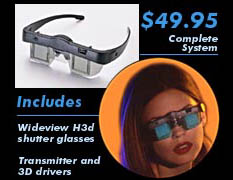
... and this is how the ad looks like
Nov. 9, 1999: H3D and Wicked3D drivers for $49,95
i-glasses/i-3D (aka I/O Display Systems/Ilixco) the actual manufacturer of H3D, eyeSCREAM, Revelator, i-glasses and the upcoming Monster Shades is selling H3D-type glasses complete with the infamous Eye3D/eyeSCREAM driver-CD in limited quantities for a limited time.
Their ad indicates that they ship the version with the large glasses (i.e. Revelator IR type), but some images show the old smaller version. You should ask when ordering, the larger glasses are strongly recommended. Controller should be similar to H3D.
Anyway this is a bargain, although the system isn't as flexible as Eye3D which comes at $99.
BTW I have a ClickTrade account with i-glasses, so please use the link above and buy plenty <G>
Nov. 7, 1999: eyeSCREAM 2.61 officially released
The driver is ready for download and requires an original Wicked3D or i-Art Eye3D game driver CD in the drive.
Support now includes:
3Dfx Voodoo2, 3Dfx Voodoo Banshee, 3Dfx Voodoo3
ATI Rage 128, ATI Rage 128GL,
Intel i740, Intel i752,
Matrox G200, new: G400
nVidia Riva TNT, TNT2, TNT2 M64, TNT2 Ultra, Vanta,
S3 Savage3D, S3 Savage4
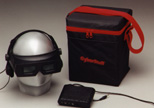

Oct. 31, 1999: Cyber 3D Visor Shutterglasses virtually for FREE
It's hard to believe, but check the Cybertronics website at www.vrdevices.com for the free shutterglasses offer. Cyberstuff the original manufacturer of the Visor closed down some time ago and Cybertronics took over all their inventory, including lots of Visors.
Cybertronics asked stereo3d.com for advice on how to distribute the stockpiles of glasses, i.e. by liscensing a 3rd party D3D-driver or something. Obviously my endless technobabble made them so numb in the head they came to the best imaginable solution for company and customers - to give them away for free as a marketing stunt.
They didn't even wait for me having a look on a sample. I hope the sample is on the way, so I can tell you all about the product soon.
I'm not shure, but my guess is that the Visor is a plain autosync VGA-pass-through
device. If - just if - this is the case it should be compatible with
ELSA Revelator, ASUS VR-100, SimulEyes, VRSurfer, APEC VR97, Cyberboy,
3D-SPEX; i.e. with all interlace and page-flipping drivers!
I don't think it'll work with Wicked3D eyeSCREAM or VRStandard VRCaddy
drivers, since there shouldn't be a line-blanker or sync-doubler in it.
The glasses itself are wired, have integrated stereo-headphones and
are also great for homebrewers.
Cybertronics asks for a $12.37 shipping fee, which is reduced to zero
if you order two games with it.
There's no warranty or support on the Visor!
I don't know for shure, but I wouldn't be surprised if this offer is limited to North-America.
I hope to fill in on all open questions within the next week. Please
stand by - or even better - order now.

Oct. 31, 1999: Eye3D software upgrade 2.1 --> 2.5 now available for download
Check www.iart3d.com for the latest official version of the eyeSCREAM drivers. The update requires the original Eye3D 2.1 CD and it uses i-Art color-code instead of H3D/Metabyte color-code.
Support now includes:
3Dfx Voodoo2, 3Dfx Voodoo Banshee, 3Dfx Voodoo3
ATI Rage 128, ATI Rage 128GL,
Intel i740, Intel i752,
Matrox G200,
nVidia Riva TNT, TNT2, TNT2 M64, TNT2 Ultra, Vanta,
S3 Savage3D, S3 Savage4
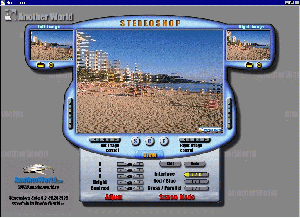
Oct. 31, 1999: Another World StereoShop fixed
The problems with Another World
StereoShop reported in an earlier News-item now seem to be fixed. The latest
version (v 1.0 of Oct 27) works fine. StereoShop supports interlace,
anaglyph and side-by-side stereo formats and is part of the Another I's
software bundle. An earlier beta version is still available for free download.
Oct. 27, 1999: Metabyte Press Release
Metabyte Wicked3Dís stereoscopic 3D technology
selected by S3 for the Diamond Monster Shades.
October 27, 1999, Fremont, CA Ė Wicked3D, a division of Metabyte, Inc., today announced that S3® Incorporatedís (Nasdaq: SIII) Diamond Monster Shadesô 3D glasses use Wicked3Dís stereoscopic technology.
In May 1999, Metabyte repositioned its Wicked3D division from a retail hardware business to a technology licensing business. Manu Mehta, President and CEO of Metabyte, Inc, said, "we are pleased to see S3 leverage several person years of our technology development. The retail hardware business was exciting. It won us several awards and gamersí hearts. However, our companyís strengths lie in technology development".
Launched in Q4, 1998, Wicked3DTM eyeSCREAM 3D stereoscopic eyewear was a hot selling product last Christmas. It provided immediate support for over one hundred and fifty games. Wicked3D now focuses on licensing its software technology.
"Based on Metabyteís technology, Diamond Monster Shades is the ultimate gaming accessory for S3ís Viper II 3D graphics accelerator and Monster Sound MX400 3D audio accelerator," said Michael Buchanan, Senior Director of Desktop Multimedia Products for S3 Incorporated.
"Wicked3Dís stereoscopic technology is currently the only solution for 3D gaming that supports hundreds of PC titles designed using the DirectX, OpenGL and Glide application programming interfaces (APIs) and is also compatible with the leading 3D game engines, said Vallal Jothilingam, Product and Marketing Manager for Wicked3D".
Wicked3D is the technology division of Metabyte Inc. that specializes in the development of software for the PC gaming and 3D graphics industry. Its parent company, Metabyte, Inc., is a fast-growing entertainment and information technology company that develops innovative software for personalized television, high-speed networking, and Web-based commerce.
Metabyte, Wicked3D and eyeSCREAM are trademarks and/or registered trademarks of Metabyte, Inc. Other names may be trademarks of their respective owners.
Contact: Vallal Jothilingam
P: (510) 494-9700 x287
F: (510) 494-9765
vallalj@metabyte.com
Metabyte, Inc.
39350 Civic Center Drive
Suite 200, Fremont
CA 94538 Fax: (510) 494-9100.
http://www.wicked3d.com
http://www.metabyte.com
Oct. 24, 1999: Apology #1: Revelator review slip-up
For some time (weeks/month ?) the Pro & Con table on my Revelator review was messed up. The Glasses and Controller part was actually from the Eye3D which couldn't make less sense for the Revelator. My apologies for the slipup. What shocks me is the fact that it took so long until someone complained. And when it happened the complain was about a minor detail although there were major errors which implied that the Revelator has sync-doubling and stuff. Scary!
BTW I think the review was correct on it's initial release, but messed up later.
Oct. 24, 1999: Apology #2: Newsletter and Mail
I still haven't sent out a Newsletter in ages and I'm constantly behind schedule in answering emails. Today I wrote over 30 mails though - there goes my Sunday...
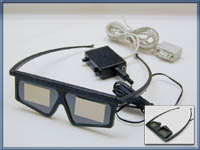
Oct. 24, 1999: VRex introduces LCD-shutterglasses for mass-distribution
Here's what they say:
"The VRex solution is compatible with existing infrastructures.
Our hardware
and software systems support Internet, LAN, WAN, broadcast, CD-ROM,
and
DVD deployment methods. Our high quality solutions are very affordable
making them economical to distribute to the masses."
Check the VRex VRVisualizer Page
Thanks to Greg for the news.

Oct. 24, 1999: The current status of C-3D television
A comment by Greg Kintz:
"The C3D Network via satellite, continues to push for their 24
hour NTSC field-sequential 3-D channel. Their program content
has been sluggish, often repeating for months. They also have
been showing a couple of 2D to 3D converted films, which doesn't
help their "true 3-D" based programming at all. But C3D does have
it's moments, including some great stereoscopic computer animation
and a few 3-D films, including "The Creeps", "Ape", and "Robot
Monster". C3D also has two in-house true 3D programs called
"The Living Room" and "The Edge". Some classic 3-D shorts
including "A Time for Beanie" and "Motor Rhythm" have also
aired on the Network. The rumor mill has it that C3D is restructuring,
and hopefully gets it's act together soon and dumps it's 2D to 3D
converted swill. "
Check http://www.3d.com/

Oct. 18, 1999: Isee3D press release:
Isee3D inc. (CDN:EYEC) today announced that it would make a
limited number of its 3D retail kits available for sale off of
its website www.isee3d.com this
Monday October 18th 1999 at
$29.95 U.S.
"As a result of the recent massive earthquake in Taiwan, the
production of our 3D retail kit has been delayed by 2 weeks",
said Gary Oberman, President of Isee3D. We are pleased to offer
a limited number of kits in advance of our full blown launch on
October 31st, and these first customers will be participating in
the historical beginnings of 3D streaming on the Internet,"
Oberman continued.
The Executive Management of Isee3D also wishes to address the
recent appearance of its technology at the Digital Hollywood show
in Los Angeles, and the current state of the company.
"We are pleased to announce that we have completed successful
content filming projects with the Baltimore Orioles of Major
League Baseball, and with the Formula Atlantic car racing
circuit. Extensive 3D footage of both the Orioles and Formula
Atlantic was filmed by ISEE3D in September and unveiled at the
Digital Hollywood Show two weeks ago in Los Angeles. The quality
of this content for streaming on the Internet is spectacular and
has received rave reviews from several major media companies in
Los Angeles, and several professional sports franchises with whom
we continue to hold high level discussions," revealed Oberman.
Commenting on the recent decline in stock price, Mr. Oberman
commented as follows; "We are not able to explain the recent fall
in share price, and in fact are surprised by it considering where
we are in terms of our technology and our business plan. Isee3D
made the claim not long ago that we would become pioneers in 3D
streaming on the Internet and that we would derive revenues from
the sale of the retail kit, advertising within the stream, and
through major content deals.
"We are on target to deliver on this claim and I, along with our
talented and committed Internet Advisory Board members - Rory
Olson, Joel Leonoff, and Mitchell Garber - and employees,
continue to share in the vision and the belief of our product and
our model. What we have accomplished in only eight months is
incredible, and the future for ISEE3D and the interest in 3D
streaming on the Internet is brighter than it ever has been."
Isee3D's common shares are available for trading through the
facilities of the Canadian Dealing Network, Inc. The trading
symbol is EYEC. The number of issued shares is 60,808,269 as of
today.
Contact: Nigel Horsley 604 444 4222
Isee3D Inc.
8604 Commerce Court,
Burnaby, BC, Canada V5A 4N6.

Oct. 18, 1999: NuVision & Win3D press release:
"NuVision Technologies, Inc. is proud to annonce the release of an
updated version of 3D Pix. Developed with the Win3D company,
the 3D Pix
Editor allows users of nearly all VR gear with about any video card
to
edit and view stereoscopic images in the popular stereoscopic formats.
This includes JPS, interlaced, anaglyph, Bitmaps, etc.
Along with the 3D Pix Editor, the 3D Pix Plugin is provided. This
internet browser plugin gives the ability to view stereoscopic images
directly from the Web. The 3D Pix Plugin gives True 3D power
to
Microsoft's Internet Explorer and with Netscape's Navigator and
Communicator.
Publishing 3D images has never been easier. You can scan directly
into
the 3D Pix Editor and compose your images. When you save them
into a
web page, they can immediately be viewed with the 3D Pix Plugin.
Since the new version works with the Win3D stereoscopic library, almost
all video cards and VR gear is supported.
For information about 3D Pix, and to dowload the evaluation versions,
contact www.nuvision3d.com.
For information about Win3D, contact www.win3d.com."

Sept. 24, 1999: Eye3D is now available in Germany, at least at:
dynaTRON Electronics
GmbH&Co.KG (Großhandel)
Puellenweg 42
41352 Korschenbroich
Tel: +49-(0)2161-99580
Fax: +49-(0)2161-995811
www.dynatron.de
and
MMS Computer (Einzelhandel)
Sterndamm 37
12487 Berlin
Tel:030/63975735
Fax:030/63975736
email
www coming soon
Price for Eye3D: DM 199,-
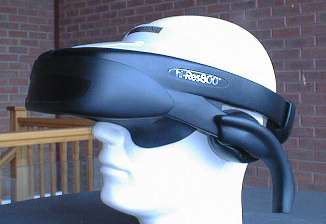
From the Cybermind NewsLetter September 1999:
"SONY have expanded their range of Personal LCD Monitors and introduced a professional line under the name LDI. Rumours are being spread that Glasstron's will slowly be removed from the consumer market.
The LDI series is basically a OEM version of the Glasstron, whereby the PLM-A55 can be compared with the LDI-50 and the PLM-S700 with the LDI-100. In addition there are also two stereo models the LDI-D50 and LDI-D100 whereby the "D" in the modelnumber indicates that it is a stereo model.
In the past a large number of our customers have complained that the Glasstron is to delicate to be used in a multi-user environment. This has even forced them to buy a more expensive headset with lower quality optics. After months of redesigning Cybermind have now solved this problem and introduced at the Siggraph'99 the hi-Res800 (see JPEG attached). We believe that the Cybermind/Sony hi-Res is a technological breakthrough, offering the high quality Sony optics in a sturdy injection moulded body that is built to last. In addition we added stereo headphones and in built microphone enabling the users to communicate with each other in a networked environment.
The hi-Res comes complete with a users friendly 'twist adjustment' headband
facility means that it is suitable to fit (almost) every headsize and a
redesigned control module with a belt clip, allowing full freedom of movement
whether sitting down or standing.
The user can optionally choose for integration of the LDI with
or without the see-through function at no extra charge. The immersive virtual
reality effect has been enhanced by minimising the amount of light
passing into the optical area.
The hi-Res can additionally be fitted with InterSense's InterTrax headtracker
making it the worlds first P'n'P headset solution for multi-user applications.
In addition to the Intertrax other trackingsystems can be integrated (e.g.
Polhemus or Ascension).
The weight of the finished product is approx. 800 grams. Design to meet
everyone's need.
The hi-Res is now available from Cybermind
Interactive Nederland."

Digital Cinema paves the way for 3D
Digital projection solves some serious technical and financial problems which plagued stereoscopic-3D based on conventional film.
Digital projectors will replace classic film projectors in the next few years. Test screenings are already done on a regular basis. Film distributors and projector manufacturers are in a hurry. There's lots of money to save in distribution and lots of money to make with projectors. Summer 2001 will be the deadline for movie theatre owners to upgrade. Star Wars 2 will come out then and George Lucas won't distribute classic film copies, just digital media.
At this point it's a head to head race between Texas Instruments with their famous DLP technology (digital light processing by micro mirrors) and Hughes-JVC who introduced ILA (image light amplification by light valve). The latter is based on tubes. Both types of digital movie theatre projectors come with a 100,000 US-$ price tag.
Current DLP-chips, as already used for tests in movie-theatres, deliver a resolution of 1280 x 1024. In theory that's quite below the potential of classic 35 mm film, not to speak of 70 mm. I just hope this will improve before they go digital in the theatre around my corner.
The Laser-projectors by german Daimler-Chrysler/Schneider doesn't seem to be ready for prime-time yet, but certainly will play a major role later.
Some companies are working on goggle-free stereo3D solutions based on
digtial projection. Hughes-JVC marketing director Alan Brawn explained
in a recent interview that 'it' doesn't look good yet, but there is potential.
Source: Chip magazine 9/99, page 218
(the above image shows a projector by BARCO and only has symbolic character)

Sept. 24, 1999: i-Art and the Taiwan earthquake
i-Art the taiwanese manufacturer of the famous Eye3D glasses and it's employees weren't harmed in the Taiwan earthquake, at least not severely. They're still answering my emails and said all is well with them although the quake is a national tragedy.

Sept. 24, 1999: Another I's Final Retail Version
Another World provided me with a sample of the final retail version.
Please click here to read the review on the pre-release sample - it'll be updated later
Some problems of the pre-release version are solved in the final version:
Hardware:
- the LCD-panels are much brighter and therefore better now
- the clear plastic-visor in front of the LCD-panels still distorts
the vision due to poor optical quality - this piece of plastic is just
a design gimmick and in my opinion it should be removed by the user
- I did - just be careful when doing this!
- the buttons on the emitter work much better now, although there's
room for improvement
- the emitter now comes with adhesive band to fix it on the top of
the monitor
- the passive VGA-pass-through autosync function now works
- all 3rd party interlace and page-flipping drivers, like ELSA Revelator
and ASUS now work
- eyeSCREAM driver doesn't since it would require a sync-doubler
- the removable nose piece is now made of softer material and even
more comfortable
- my specimen of the new pair of glasses seems to have a defect, it
has some problems with the shutters, there are irregularities in the shutter-frequency
producing additional flicker; feels like a loose contact or something;
I assume this is just coincidence, the first pair of glasses works correct
Software:
- the VRML viewer VRScape now works better (maybe the new graphics drivers
I installed play a role here too)
- VRScape slows down considerably in stereo mode
- Stereoshop still crashes on my system
- all the setup programs have a strong tendency to crash on my system
(Win 98)
- there should be a single setup.exe for all 4 programs, it's uncomfortable
to install them seperately and to type in the serial number 4 times

Sept. 19, 1999: VRCaddy - Universal Direct3D Stereo-Driver for VR-Joy - Free beta
VRCaddy is a stereo-wrapper
which sets most Direct3D programs into alternate-line stereo-format. VRCaddy
is hardware independent and supposed to work with most 3D-VGA-boards.
OpenGL requires
an additional GL-to-D3D-wrapper.
VRCaddy requires shutterglasses with line-blanker, i.e. VR-Joy and compatibles or a HMD with alternate-line support, i.e. Cybermaxx, i-glasses, etc.
VRStandard offers a free beta for VR-Joy owners on their website.
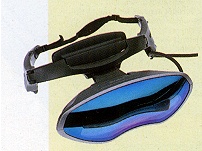
Sept. 19, 1999: Sony Glasstron stereo control
More on the Sony LDI-D100B by Stephen A. Kupiec :
"By accident we have
discovered that if a mono 3.5 mm plug with +5v tip
and GND ring is
inserted into the control jack of the LDI-D100B the
system goes to frame
sequential stereo mode. Of course, selection of
auto- and pseudoscopic
modes is achieved by the use of the A/B polarity
switch on the control
box."
Note by stereo3d.com:
What were these Sony guys thinking? I received several mails regarding
the Stereo-Glasstrons. Now I have the full picture. Actually it's very
easy. The stereo versions of the Glasstron come at more than the double
price tag of the mono versions for no reason whatsoever (both versions
have two seperate displays). To get them into stereo mode you just have
to juggle with 5 mini-discs and sing the japanese national anthem backwards
while standing on your head.
All in all a highly
recommended product - enjoy!

Sept. 3, 1999: ASUS review now available
It's ASUS-time folks.
The ASUS-system received some bad reviews over the past few month from
other websites and magazines. Now stereo3d.com takes over. What do you
expect from your favorite glasses-basher? You'll be surprised.

Sept. 3, 1999: Another I's update
AnotherWorld
informed me that the final retail version of Another I's is ready. According
to the manufacturer the 'Visor-problem' is fixed now - among other improvements.
The price isn't set yet, but should be very competitive. Stereo3D.com will
receive a sample of the final version soon. Until then, take a look at
the review of the pre-release
sample.

Sept. 3, 1999: Eye3D update
Here's what i-Art says about the Eye3D power supply which took a step back from it's predecessor (and from the competition, i.e. Another I's) as pointed out in my review:
"As you well know, the predecessor of Eye3D was
using a
keyboard-pass-thru power supply option. That
really facilitated end users
to install it and use it without worry about
the power issue. Nevertheless,
there is one thing we are likely to ignore. That
is PC main board issue.
Due to cost-down PC, most of main boards are
designed without
power-protection for the keyboard. In other words,
if you are using the
power consumption totally more than its original
power current designed
for keyboard, that will probably burn off the
keyboard's power trace on
the main board. And, that will cause keyboard
can NOT work because its
power is terminated. Though not all of the main
board will make such a
trouble, we can NOT afford to meet 1% or even
0.1% of such a case.
Therefore, we use a power adapter to replace
keyboard's power."
JG Wang, i-Art Corporation
Sept. 3, 1999: Digital-CRT-monitors ante portas - the end of shutterglasses?
The CRT (tube) monitor
of the near future may be digital. The hardware manufacturers fight for
a single digital connection standard for all monitors, i.e. LCD, CRT, Plasma,
whatever...
A digital CRT will
have a video-memory and runs on it's own sync-signal, which is hidden inside
the case. This will disable any (!) shutterglasses unless the monitor
manufacturer puts a shutterglasses-connector ON (!) the monitor! Even worse:
the internal digital electronics of the monitor would have to provide the
flipping somehow. Uuhhhh - we're in trouble.
The new standard
also wouldn't work with other current add-ons which are connected via VGA-pass-through,
such as TV-, MPEG-, Voodoo2-boards, etc.
I expect future
CRT-monitors to have digital and classic-VGA connectors, but how will a
digital-CRT treat an analogue VGA-input? Maybe it'll digitize and store
the images in the buffer - just like a 100/120 Hz TV-set - and display
them on it's own internal sync - no chance for shutters.
Digital-CRT's should have lots of advantages though. Optimum sharpness, optimum refresh rate, optimum image-size & geometry.
August 28, 1999: I haven't published a Newsletter in ages. Sorry for the inconvenience. I'll have to fix and update the mail-database, but first I'd like to finish the ASUS and StereoGraphics reviews.


August 28, 1999: And the all-time-winner is...
Read why the wireless
Eye3D is the 'king of compatibility'. The unofficial Eye3D-page
is now online.
August 28, 1999: Win3D press release:
"The Win3D company
is excited to announce the release of our stereoscopic
library Ė Win3D
v. 2.0. This library includes new features, such as the
ability to control
the monitorís refresh rate, and the ability to set
the display into
interlaced mode. The list of supported video cards and
VR gear has greatly
been increased.
The Win3D stereoscopic
library provides the tools for Windows developers
to add universal
support to their applications. Almost all video cards
are supported, and
almost all VR gear is supported. This is done in
page-flipping mode,
so no resolution is lost. The application just
needs to provide
a stereo pair, and the Win3D library does all of the
work to control
the glasses and display. The software development kit
is freely available
for download.
Now available is
the Win3D interlace control. This application puts the
desktop into interlaced
mode, so that interlaced stereoscopic images can
be seen in 3D.
Unlike similar products in the past, almost all hardware
gear is supported.
The same interlace control will work for H3Dís, for
Simuleyes, for 3D
SPEX, and for glasses in-line to the VGA cable. The
interlace control
requires the Win3D stereoscopic drivers.
To get a free download
of the Win3D drivers, the eval version of the
Win3D interlace
control, or the Win3D SDK, go to www.win3d.com."
David C. Qualman
Win3D company
Remark by stereo3d.com: please don't confuse Win3D with the 3DWin-interlace driver by i-Art.
August 28, 1999: Is there a dealer who ships shutterglasses to Romania...
...without the need for a credit card, i.e. who accepts cheque, money order or something? Shipping could be done by DHL or UPS.
Please contact Cornel Sandu,
University Politehnica of Bucharest directly or write to stereo3d.com
August 28, 1999: Italian mailing list
"I'm glad to announce the birth of "holostereoitalia
mailing list".
The description of this mailing list is:
italian language forum about "the third dimension"
.
I hope you'll advertise throught your web pages.
You can join this list by going to the following
web page:
http://www.onelist.com/subscribe.cgi/holostereoitalia
Thanks!
Sergio Baldissara
List Owner"

August 28, 1999:
Stiftung
Warentest: Thumbs down on Sony Glasstron PLM-A 55 E
Stiftung Warentest is a german non-profit consumer products test institute.
They don't publish ads in their publications and don't accept samples from
manufacturers. They usually buy several specimen of the same product in
different shops for their tests - inkognito! This time they got the Sony
Glasstron PLM-A 55 E by the balls. This low-res (180 k pixel), video-only
device totally bombed in the test.
According to Stiftung Warentest the image quality is poor, resolution
low. The comfort is soo bad only hardliners will stand a 2-hour-movie.
There is pixelization, foggyness, motion artifacts. Text is usually unreadable.
Outdoors the high ambient light will screw what's left of the image which
seems to be hanging to one side instead of appearing perfectly horizontal.
Stiftung Warentest also points out that the Sony-manual contains 6
pages of health-warnings!
The article appeared in 'test' issue 9/99.
Regular readers of the stereo3d.com-NEWS know there are advanced
VGA-versions of the Glasstron with about 8 times (!) higher resolution
and even stereo-support. - Quality has it's price though.

August 28, 1999:
Sony
Glasstron stereo modes
Here's some additional info about the Sony stereo modes by Stephen A. Kupiec:
"Having a pair of the LDI-D100B's I can say this
about page flipping
If you send H3D style frame sequential SVGA input
alone (such as Quake
II demo w/ H3D patch) the Sony HMD will not drop
into stereo mode, you
must send a stereo pulse into the control jack
via the 3.5 mm mono phono
plug as I noted previously. But if you invert
the polarity of the stereo
sync signal during operation the fields do not
reverse! You have to
adjust the polarity A-B switch to flip fields.
I have yet to ascertain whether the system uses
the polarity of the
stereo sync signals or simply uses an edge trigger."
Remark by stereo3d.com: I'm not shure if Stephen
is talking about split-screen or page-flipping input here. I'll have to
check this.
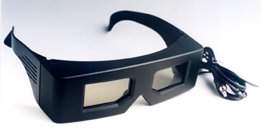
August 22, 1999: Latest ASUS-drivers (v2.09e) with interlace and page-flipping support - First impressions
There's still much room for improvement, but page-flipping looks very
good and in some games, like Rogue Squadron the stereo-effect is great.
There are some graphics bugs though.
What really excites me about the ASUS-page-flipping is the fact that
there are no slipups like with the ELSA-drivers. I can finally use my Force-Feedback-Wheel
again - and yes - it works with NFS4. I guess that's due to the fact
that ASUS uses passive synchronization, while ELSA actively triggers the
glasses via the DDC-pin of the VGA-port. ELSA makes heavy IRQ-use here.
BTW the ELSA-general TNT drivers do work on my ASUS V3800-TVR sample-board which has an onboard glasses-controller with 3.5 mm stereo-jack. The glasses work, but the ASUS-controller curcuitry doesn't know which is left and right when used with the ELSA-drivers. This leads to reversed stereo half of the time which should be avoided. The only way to fix this is to push the ELSA-stereo-on/off hotkey until the controller catches the 'right side'.
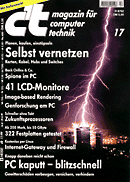
August 22, 1999:
You'll
find my one-page review of the ASUS VR-100 glasses in the latest issue
(17/99) of german c't-magazin für
computertechnik. A dedicated ASUS-page in english language on stereo3d.com
will follow later.


August 22, 1999: Another I's will soon be available from german distributor 3DIST too!

August 22, 1999: A preliminary version of my Another I's review page is online now.
BTW... the TV/Video version of the AI's will be available from September 10.

August 13, 1999: In case you haven't seen it yet - the shutterglasses comparison chart has been reorganized.

August 13, 1999: The latest ASUS-VR100-TNT-stereo-drivers with interlace AND page-flipping support are available (2.09beta) - Haven't checked them yet. - Stand by.

August 13, 1999: Sony HMD stereo image formats and Sony at Siggraph
According to Sony distributor CYBERMIND Interactive Nederland the stereo version of the Sony HMD supports above-below split-screen image format. This format is supported by many professional applications and by Wicked3D Global eyeSCREAM drivers.
There's some confusion regarding the frame-sequential stereo format. It seems the Sony autosyncs to page-flipping, but also allows seperate input of a stereo-sync signal via a mono 3.5 mm jack. I guess this is to keep stereo-orientation stable and to prevent inverse stereo. I don't have the time for investigating this.
Please check the message I received by Stephen A. Kupiec about the matter. - Thanks Stephen!
Also check this press-release regarding Sony's Siggraph activities. - Thanks to 3-DVideo Inc.
August 13, 1999: Latest News from Tetratel, makers of the EyeFX glasses:
"C-3D television station is on the air (Spacenet 3, channel 9, North America). This is available to c-band satelite systems free of charge.
Tetratel has the contract to supply C-3D customers with the LCS glasses.
The station features 7 hours of revolving 3-D content. The last time I saw it they had 2 'B' movies and the Santa Barbara swim tape. They have very professional promo's to educate the public and sell glasses to potential customers.
Overall they have done a very good job in a short time to make it the best 3-D push to date.
On another note also - Tetratel just signed a contract to incorporate our 3-D glasses into a DVD / Internet box to be sold to the public in the near future. I am putting together a library of DVD 3-D titles that can be sold into this market.
We are able to convert the left-right tapes to the format we need (16 X 9) for MPEG DVD format. With our newest version of glasses (Flicker free the effect is fantastic and it should also work equally as well with PAL)."
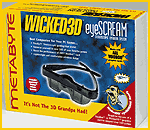
August 13, 1999: eyeSCREAM hardware with large LCD-panels (Revelator-style) and eyeSCREAM driver CD's will soon be available from Mindflux.
August 10, 1999: Driver News
- ELSA now offers Revelator support for some 3rd party TNT/TNT2 boards
- ASUS added page-flipping support to their upcoming drivers
- i-Art liscensed global eyescream from Wicked3D
Thanks to Jörg
Kampmann,
Shai Eden,
ASUS-Taiwan
and stereovision.net for the
informations.

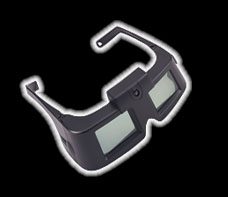
August 10, 1999: i-Art Eye3D update
Now here are the facts:
- The current i-Art
Eye3D has manual control for interlace-autosync, page-flipping-autosync
and line-blanking
- Sync-doubling
is activated by color code; it accepts i-Art and H3D/eyeSCREAM codes
- There's a hotkey
program included to activate sync-doubling manually
- The next version
of the controller, due in October 99, will have an additional sync-doubler
button for manual override
- The system was
successfully tested with eyeSCREAM, ELSA and ASUS drivers
- i-Art liscenced
the Global eyeSCREAM drivers from Wicked3D and puts them in the box
- The software bundle
also includes the 3DWin V2.31 interlace driver, Virtual Gallery Demo, and
XidMary V2.4 which
is a 3D Plugin for 3DStudio Max R2/R3
The system is available
by the end of August, at this time a sample should arrive at stereo3d.com.
In the meantime you can check the review of the predeccessor
'Virtual Eyes' which should use the same glasses, but a simpler controller.

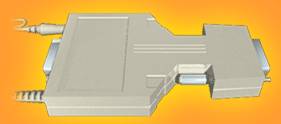
August 7, 1999: Another I's preliminary information
The Another I's (PC) sample arrived at stereo3d.com, but it's an evaluation sample which differs from the final retail version in some details.
First impressions:
Controller
- the system does
line-blanking in all modes I tried (manual control) - good!
- like almost all
low cost systems it has minor sync-problems in some modes which may become
visible as darker areas on top or bottom of the screen - this isn't severe
and can be overcome by choosing another resolution/refresh
- the system is
supposed to do autosync to page-flipping and interlace as well - not tested
yet, there's something wrong with my sample
- there's definetely
no sync-doubler for above-below split-screen format (i.e. Wicked3D, etc.)
- there's a reverse
button - good!
- the control buttons
are on the front of the IR-emitter and face the user - good!
- there should be
a tape or something to fix the emitter on the monitor which wasn't in my
eval-package - this may (should) change in the final version
- The emitter/control
unit of my sample has mechanical problems with the buttons, but this should
be fixed in the final version
- the dongle although
reminiscent of the H3D/Wicked-dongle is considerably smaller - good!
- power comes from
the keyboard connector (DIN and PS/2 versions available), no power adaptor
required - good!
- the VGA-dongle
and the IR-emitter can't be separated, there are no jacks, no DIN-3, nothing
Glasses
- wireless - good!
- the glasses are
large enough to fit big prescribed glasses
- the glasses are
rather sturdy with foam in the bows
- weight with batteries:
90 g
- the glasses look
cool, but the plastic visor in front of the LCD's distorts the vision (reminds
me of the VRSurfer) - Another World already told me that this will be changed
in the final retail version!!! I think it would be best to just remove
it - period!
- dimension of LCD-panels:
3.7 x 2.5 cm
- dimension of panel
cover openings: 3.9 x 2.3 (yes they give 2 mm away in the height)
- there's a nose-piece
which can (and must) be removed for use with prescribed glasses
- comfort without
eyeglasses and with the nose-piece is better
Software
The software is in beta and will change over time
Included in the package are:
VRScape: let's
start with the cream topping - a stereo VRML97 plugin for Netscape and
IExplorer. I saw a graphic bug in stereo mode, but it definetely has potential.
It's supposed to support OpenGL as well, but I haven't checked that yet
3DGallery:
demo images and animations, one of the best 3D-demo reels I saw
VRPic: stereo
still image viewer
Stereoshop:
still image editor, merges stereo-pairs into alternate-line, side-by-side
or anaglyph format (
VRStream:
this is just an AVI-player which is fixed to 1x window size, so that the
structure of alternate-line format 3D-AVI's isn't destroyed; the feature
which would make an alterante-line video viewer intersting - the zoom function
- is missing
- the final retail
version is expected in early September
- there will be
a TV/Video-version too

August 4, 1999: The perfect shutterglasses finally arrive !?
i-Art maker of the Virtual Eyes shutterglasses announced their new product Eye3D. The Virtual Eyes already were some of the best wireless VGA-pass-through glasses (see review). For the new Eye3D they added sync-doubling and line-blanking, all of which (hopefully) with manual control again. If so they would be the first shutterglasses to support ABSOLUTELY EVERY driver and every native stereo-software ever written - period! And yes - they got good, large LCD-panels!
Well, seems like at least one company listended to reason.
Other companies always tried to argue with me:
'naah we don't need
sync-doubling, line-blanking is superior';
'naah we don't need
line-blanking, sync-doubling is superior',
'naah we don't need
manual override - our customers wouldn't understand this',
'naah we don't have
to support existing programs and drivers, our own programs and drivers
will be better'
... and so forth.
Back to the product:
i-Art is going to bundle the glasses with a universal Stereo-driver.
Here's what they say:
Product Features:
Great for Direct3D,
OpenGL, and Glide PC games
Supports 3Dfx
Voodoo2, Voodoo Banshee and Voodoo3, Nvidia's
RIVA TNT, TNT2
and ATI's Rage 128 based boards, etc (with Eye3D
stereoscopic
game driver) .
Compatible with
other stereo 3D game drivers
Provides four
modes: interlacing, page-flipping, sync-doubling, and
line-blanking
Now the features of this game drivers are identical to the current version of Wicked3D Global eyeSCREAM, so maybe they're going to liscence it from Metabyte.

August 4, 1999: The Wicked3D eyeSCRAM driver update is available now. This is the software which caused so much rumor as 'GLOBAL eyeSCREAM'.
You still need an original Wicked3D driver-CD to install the update !!!
It's supposed to work with:
Banshee
Voodoo2
Voodoo3
ATI Rage 128
TNT
TNT 2
For Voodoo3 and the other newly supported chipsets it's not a driver, but a wrapper. The original board-driver is required and the wrapper tries to - well put the stereo-functions on top of that. Uhh I see trouble ahead.
I tried it with ELSA and ASUS TNT2 boards. With the ASUS nothing happened - no Wicked3D options in the display properties. With ELSA the options came up and the stereo-testscreen ran succesfully. I tried some programs, they run, but I couldn't see anything, because there's only a frozen nonsense-image on the screen.
You may also check stereovision.net which discusses the stuff in-depth.
July 24, 1999:
New
and updated pages on this site:
 |
 |
 |

July 17, 1999: There's an absolutely fantastic price & feature table available for the Sony HMDs at CGSD Corporation.
The price is much lower than I expected, but I stumbled upon something very irritating.
According to the list the
hi-res Glasstron
- monoscopic - $1850
hi-res Glasstron
- stereoscopic - $3975
(same story for the low-res versions: $750 vs. $1710.)
There's something odd! As far as I know these helmets are almost identical. Both have two sepeate LCD-panels. The stereo version must have some $20 worth of additional circuitry and wiring. There can't be any justification for the extra $2000+ .
There are 3 possibilities:
1) the price list
is wrong
2) I am wrong and
there are major differences between the models in question
3) most likely the
stereo-version is produced in much much smaller numbers and the economics-of-scale
are responsible - BUT why in H*** do they produce a monoscopic-version
anyway? The difference in production cost must be negligible! AFAIK both
have the same connectors and behave identical when used with monoscopic
sources. There's no point for doing this to us. I believe all Glasstrons
have two LCD-panels, one for each eye, and the panels are by far the main
cost factor.
There's more to be found: the version which lets you choose between normal power and battery is a bit less expensive than the version with normal power only (economics of scale again).
The OEM version without the expensive alloy casing is almost as expensive as the normal version (economics of scale again).
You have to choose between the NTSC and the PAL version! - Why? - My grandma's TV can digest both! Why does a $4000 digital display product from top-of-the-world-hi-tech manufacturer Sony doesn't have multi-system support? The video signal has to be digitized anyway!
Thanks to Martin
Gruhn for pointing me to the CGSD page.
July 17, 1999: The cure for ghosting - choosing the right phosphor
The main problem
of shutterglasses is ghosting.
The main cause (by about 80 to 90 %) is the slow phosphor decay time. Monitor
tubes with P22 phosphors (zinc sulfide for blue/green) are very bad in
this respect. Much better would be P43 tubes (rare earth for green). The
problem is: P22 dominates the market. I couldn't find a mainstream non-P22
monitor yet. If you can find any please tell
me or post it on the discussion board.
With projection systems the situation is better. BARCO the leader in the large screen business is aware of the problem and offers special 'fast green phosphor' versions of some of it's 3-tube-projector models.
BARCO has an excellent page about stereoscopic 3D projection covering shutterglasses, shutterscreens, polarization glasses, single and dual projector setups with tubes and LCD. Also get the Barco color brochure on stereo projection in Acrobat Format - a must have!
My favorite idea - using a single DLP (micro mirror) projector with shutterglasses isn't addressed there. I'm still looking for a DLP which accepts high refresh rates >100 Hz and doesn't screw the stereo-information by line-doubling or other ODT's (obsolete digital toys).
Special thanks to NuVision
and to 3DTV Corp. for the informations
on the phosphor issue.

3DVideo-to-PC conversion & more
July 17, 1999: 3D-Video Wizard Michal Husak offers a new page dedicated to digital stereo movie creation and playback. He also gives away all the neccessary software - for free!
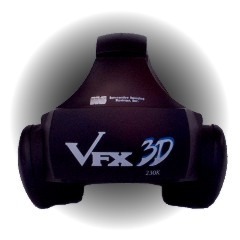
July 16, 1999: Why is the new VFX called 3D? Well it's got it's very own Direct3D universal stereoscopic drivers developed by IIS-Interactive Imaging Systems themselves. Now is this whole stereo-business beginning to steam up or what?
That makes 4 now: Metabyte, ELSA, ASUS and IISVR. Who's next? Well it's time Microsoft makes stereo part of Direct3D and forces every developer to use meaningful, realistic Z-values.
July 10, 1999: The ELSA Revelator and NuVision 60GX reviews are now online!
I'm still researching
the Revelator-ressource-conflict issue. Input
from other Revelator users is welcome. ELSA
has released several useful hints
(german vers.) in their support database to overcome most problems with
IRQ and slipups. There are no more complains by users on the forums
of stereo3d.com and stereovision.net or in my mailbox. So I think the problem
doesn't show up that often anymore.
My personal experience
goes like this: I complied to all of ELSA's instructions, but Force-Feedback
on the Joy/Midi port still leads to slipups in the stereo-mode.
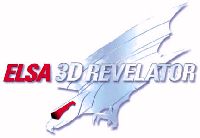

Yiiiiieeeeehhhaaaaaaaawwww!!!!!!
July 9, 1999: Sony Glasstron distributor Cybermind Interactive Nederland confirmed that the PC-version of the Stereo3D-capable Glasstron, the LDI-D100BE, should work with the ELSA Revelator drivers.
Imagine this! - Stereoscopic3D for all D3D-titles! - Total immersion! - No flicker! - No ghosting!True 800x600 per eye!
The LDI-D100BE features LCD-panels with 832 x 3 x 624 = 1.561.248 pixels = 520.416 triads - more than 8 times as many as the VFX-1, Cybermaxx or the classic version of the i-glasses! Looks like we have a new dream-configuration here.
The LDI-D100BE supports field-sequential stereo, i.e. page-flipping, on the VGA- and the video-input. Therefore it should work with ELSA-Revelator drivers, LCD-BIOS, VR-BIOS, WinSPEX, NuvFrag and other 'flipping-drivers' as well as with prerecorded 3D-VHS-tapes, Nu-View camcorder tapes, etc.
There are open questions though, since the 3D-control of the set is rather irritating. Here's what the data-sheet (from german distributor VRT ) says:
Control Input for
3D versions LDI-D50BE and LDI-D100BE
FLD Pulse:
Polarity (A): High
- right side, Low - left side
Polarity (B): High
- left side, Low - right side
High: 4.0 - 5.0V
Low: 0 - 1.0V
2D/3D Switch:
2D: High (4.0 -
5.0V)
3D: Low (0 - 1.0V)
What's not supported is the popular above-below split-screen format, known from StereoGraphics, Wicked3D and TriDVD. I doubt the Glasstrons' input-signal-processor will accept the 100+ Hz from a sync-doubler. In theory this would be no problem, since at 120 Hz each panel would only have to display 60 Hz.
The Stereo-Glasstrons have no stereo-reverse switch, which may cause problems. Here's my Revelator-hint for the Glasstron and other systems which don't have a reverse switch: Just hit the ELSA stereo on/off-hotkey until you catch the right frame at the right side.
The video-only Stereo3D-Glasstron, the LDI-D50BE, lacks the VGA-input and only sports 180k-pixel panels, opposed to the 1500k-pixel panels of the 'D100'.
The monoscopic version are called LDI-50BE/LDI-100BE. So the 'D' stands for Stereo.
All models come without headtracker, but they can be equipped with a 3rd party headtracker, like theIntersenseIntertrax gyroscope tracker.
The price for the 'D100BE' ??? Well, better don't ask.
BTW, I heard rumours that Sony may come out with a consumer stereo-camcorder and a consumer stereo-Glasstron. - Just a rumour! Well, I don't know the price of the LDI-D50BE, but this may be the consumer stereo-version already.

![]()
It should be noted however that there
are other brands of HMD's with the same or even better specs than the D100BE,
for example the Kaiser ProViewXL 35/50 with 1024x768 per eye. What about
the i-glasses? Well, The i-glasses Protec model 120 has two VGA-inputs
for stereo. So you need two VGA-signals with seperate left and right signal-streams.
Both streams must be genlocked. The resolution is 640x480 per eye and the
price is $4000. The standard i-glasses are comparable to the Sony
LDI-D50BE. Please check the HMD-chart.
A little overview:
| Resolution per panel/eye | Products (examples) | Price Tag - less than... |
| 1024*768*3 = 2.359.296 pixel | Kaiser ProViewXL | $15.000 |
| 800*600*3 = 1.440.000 pixel | Sony Glasstron LDI-D100BE (832*624*3) | |
| 640*480*3 = 921.600 pixel | i-glasses Protec (?) | $4.000 |
| 263*480*3 = 378.720 pixel (360k) | i-glasses X2, VFX-3D | |
| 263*230*3 = 181.470 pixel (180k) | VFX-1, i-glasses, CyberMaxx, Scuba, EyeTrek, Sony LDI-D50BE | $1.000 |
All the consumer-HMD manufacturers are always talking about 180k-pixel displays since this sounds much better than the embarrassing 263*230. Yes - truth hurts!

Another I's - New Info!
July 9, 1999: The PC-version of the new wireless shutterglasses by Another World do have 'line-blanker' and 'autosync' capabilities, but no sync-doubler for the above-below split-screen format. This makes them similar in functionality with the VR-Joyand the Tetratel EyeFX. What may set them apart is the futuristic design and the cordless operation. There's also a TV-version and some new software including a VRML viewer. Like all plain VGA-pass-through autosync glasses with manual control they should work with the ELSA Revelator drivers.
Another
World promised to supply stereo3d.com with a sample ASAP.
June 25, 1999: Streaming-Video on the Web get's 'shuttered'
From the Isee3d press release:
'Isee3d will soon be offering consumers
the full '3D Viewing
Enabler Kit'. This retail box will include
the hardware and
software (including 3D shutter glasses)
required for plugging
directly into the free version of RealNetworks
RealSystem G2(tm)
player and viewing content in high quality
3D. With over 60
million registered users of the
RealPlayer, Isee3D will leverage
RealPlayer to direct consumers directly
to its new 3D portal web
site.'
June 25, 1999: VR Standard Corporation is giving away a free high-tech Laser (digital) Mouse with the purchase of VR-Joy until the supply lasts.
By the way: VR Standard Corporation has a world wide distributorship contract with Woobo Electronics, making it the sole distributor for VR-Joy. 'Futuristic Enterprises', which was mentioned on the news earlier, will be another sales line, much like just another distributor

June 25, 1999: New brand of shutterglasses: Another I's
The new wireless shutterglasses by Another
World are available for PC and TV. There is some new stereo-software
too, including a VRML-viewer!

I can't tell much about the controller
technology yet, apart from the fact that there's a 'line-blanker' in it.
BTW, the thing looks like..., looks like..., ahh never mind.
June 25, 1999: New: German i-glasses website
Distribution of i-glasses, i-glasses x2, Protec, spare parts.

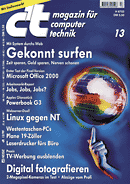


June 19, 1999: Don't miss my Revelator review in german language! Issue 13/99 of c't-magazine is out now! Available all over Europe.
Later the Revelator will also be covered on stereo3d.com in a different form and in english language. For now you may check my previous news-postings regarding the Revelator and the updated Best-Buy-page.
June 19, 1999: Recent updates of pages:
Shutterglasses
comparison chart
Shutterglasses
X-Ray lab
Best-Buy
Recommended products page
Application
software chart

June 12, 1999: NuVision 60GX
I just received the NuVision 60GX professional wireless glasses.
In a nutshell:
- they connect to
everything: DIN-3, DIN-5, DIN-7, DB9, 3.5 mm, VGA-pass-through (ask for
the proper adaptor)
- the version for
'non-stereo-ready (NSR)' PC's and workstations has a sync-doubler and also
syncs to any interlace or page-flipping mode
- the NSR
version works with everything: Wicked3D drivers, ELSA Revelator drivers,
H3D-native titles, professional StereoGraphics titles, LCD-BIOS, VR-BIOS,
SSDI, WinSPEX, 3D-Win, SimulEyes titles, whatever... (Warning:
most drivers are only sold with respective hardware)
- there is no (!)
line-blanker as in the VR-Joy or EyeFX
- giant pi-cell
LCD-panels
- comfortable, fits
over prescribed glasses
- manual control
for all functions
- sync-doubler gets
the power directly from the VGA-port if available, a seperate power supply
is also part of the set
- good documentation
An in-depth review
is in the works.
May 30, 1999: VREX stereo survey - prices to win!
Help VREX
do develop the stereo3D hard- and software of the future. Join the survey.


May 30, 1999: H3D/eyeSCREAM-Activator and ELSA boards
If you own some H3D/Wicked3D
glasses you may wonder if they'll work on the new hot ELSA boards and ELSA
D3D-stereo-drivers.
Well they'll work
using the H3D-Activator
(Page-Flipping mode) , but there are several problems:
- up to now the Revelator
drivers are not available online; they also doesn't seem to be part of
the ELSA board-driver packages
- there must be
no change in graphics mode after using the Activator or the glasses will
drop out of stereo-mode; many games use different modes for menues and
game, so there's a problem
- if there's only
one tiny slipup in the page-flipping the glasses may show a reversed picture;
this really can happen and there's no way back apart from ending the game
and go back to the Activator
- the original ELSA-Revelator
glasses work under way higher resolutions and refresh rates. I tried to
put the H3D/Wicked3D into page-flipping mode under 1024*768@hi-color@100
Hz - no use.
Here's my recommendation: If you're interested in the ELSA boards or already own one, get the original wireless Revelator IR glasses. The Revelator glasses will listen to the H3D-IR-emitter and vice versa. So you have the best of both worlds controller-and-driver-wise and you and a friend can always use the two glasses simultaniously.
This doesn't imply a general recommendation for the ELSA system - yet.
BTW the controller/emitter
of the Revelator won't work on current Wicked3D boards and drivers, since
it lacks the required sync-doubler circuitry!

May 23, 1999:
Mother
nature says: Stereo is more important than Color
In the current issue
(6/99) of german popular science magazine P.M.you'll
find an article about the visual systems of animals. Surprisingly many
mammals (Säugetiere) have excellent stereoscopic-vision, but no or
very limited sense of color. Obviously for many lifeforms stereo is a larger
survival factor than rich colors. It should be noted however, that limited,
i.e. selective color perception, is an advantage in itself in certain cases.
Earlier News:

